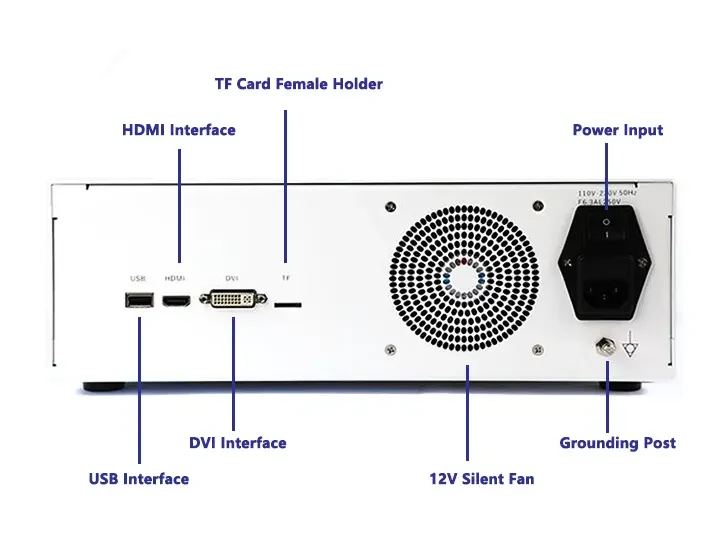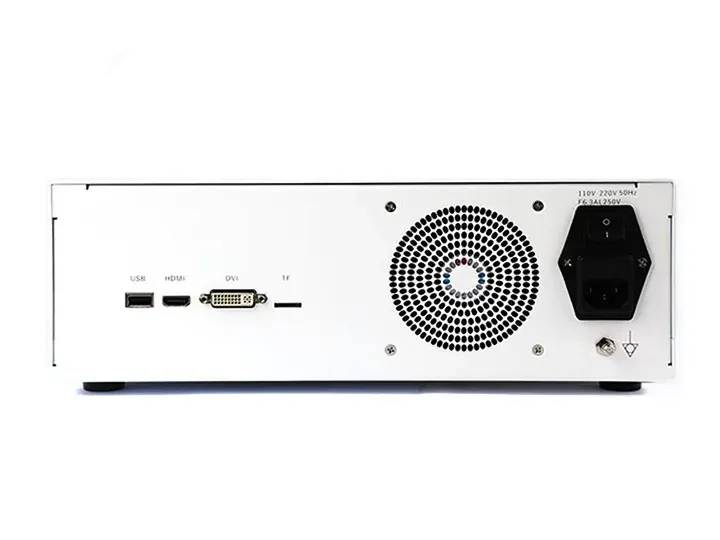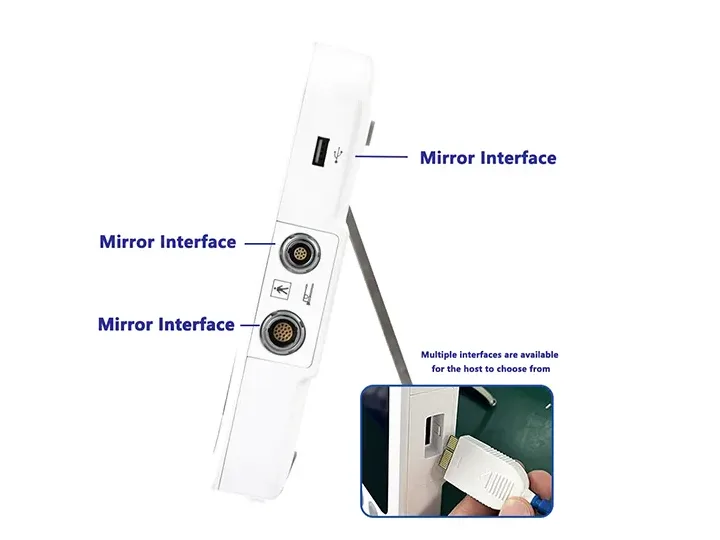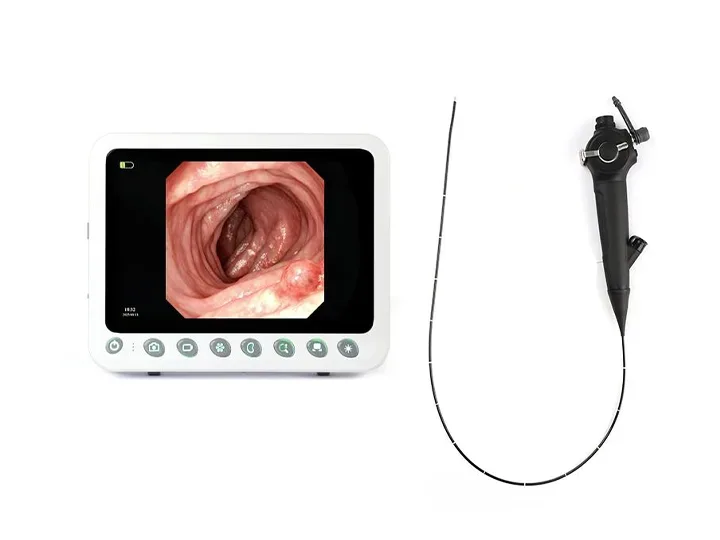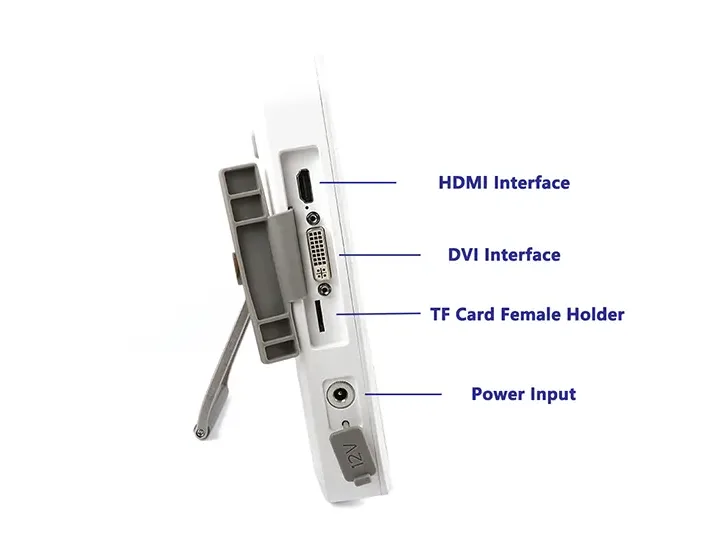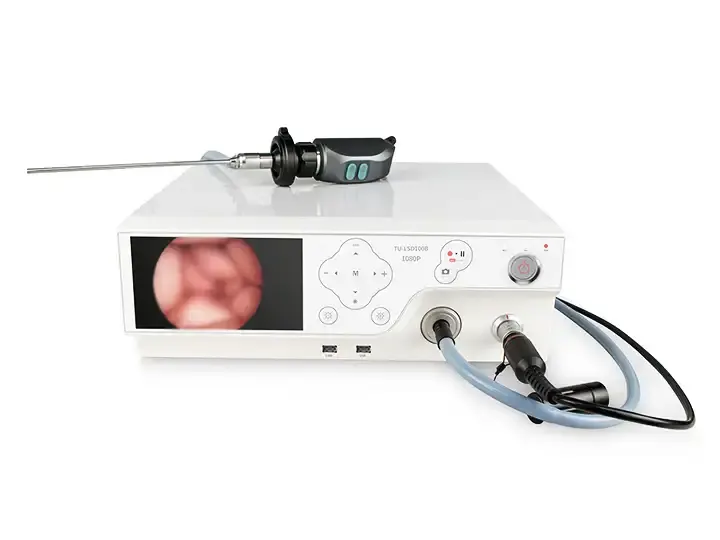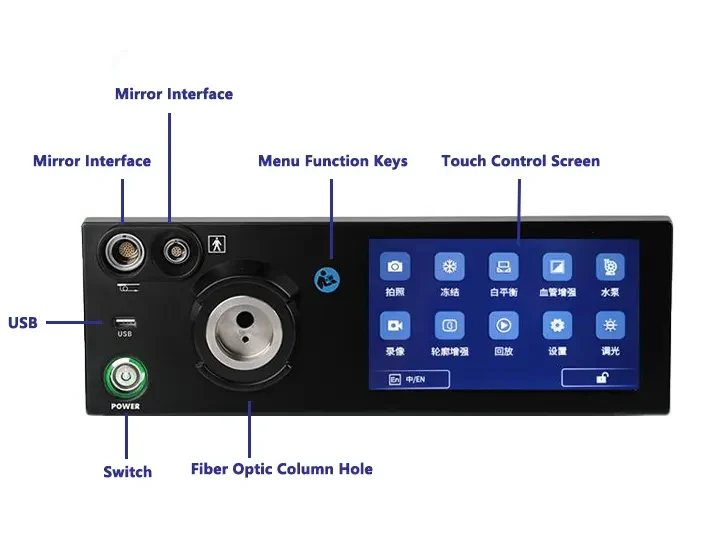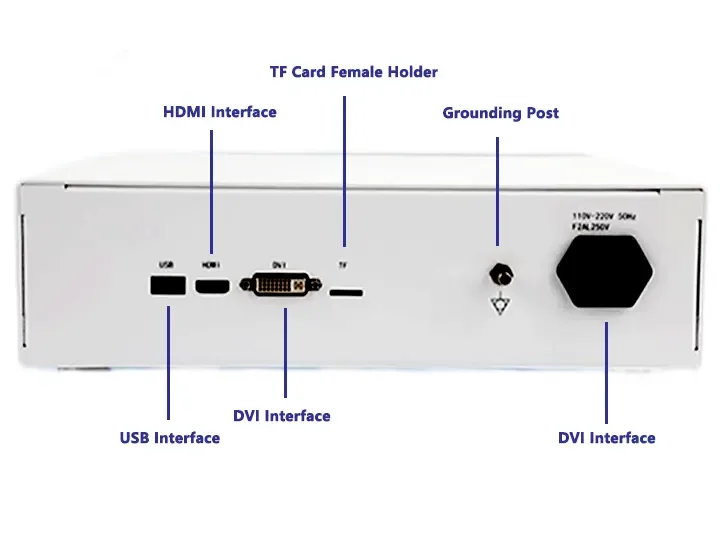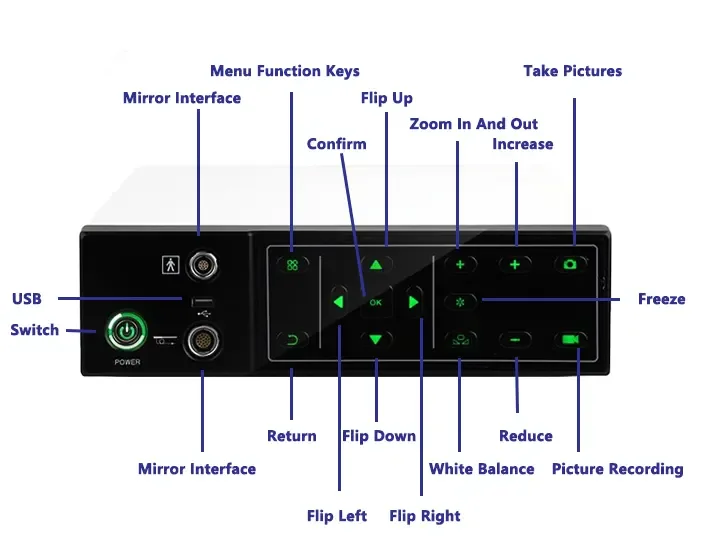Here's the revised English description with positive framing (696 characters):
Gastrointestinal Medical Endoscope Desktop Host
This desktop system delivers 4K UHD imaging (3840×2160) for gastrointestinal medical endoscopes, enhancing diagnostic visualization during procedures. Its compact design streamlines clinical workflows for endoscope medical examinations.
Technical Specifications
4K Ultra-HD imaging resolution
HDMI/USB 3.0 video output interfaces
Physical control knobs for sterile operation
Integrated carrying handle
4+ hours continuous operation
Clinical Applications
Tissue visualization: Clear display of mucosal structures
Examination efficiency: Simplified setup process
Diagnostic reliability: Enhanced detection capability
Operational Advantages
Consistent imaging performance for gastrointestinal medical endoscopes
User-friendly interface for clinical staff
Stable operation in endoscopy settings
Focused exclusively on core imaging functions, this host prioritizes reliability and ease of use in gastrointestinal endoscopic practice.
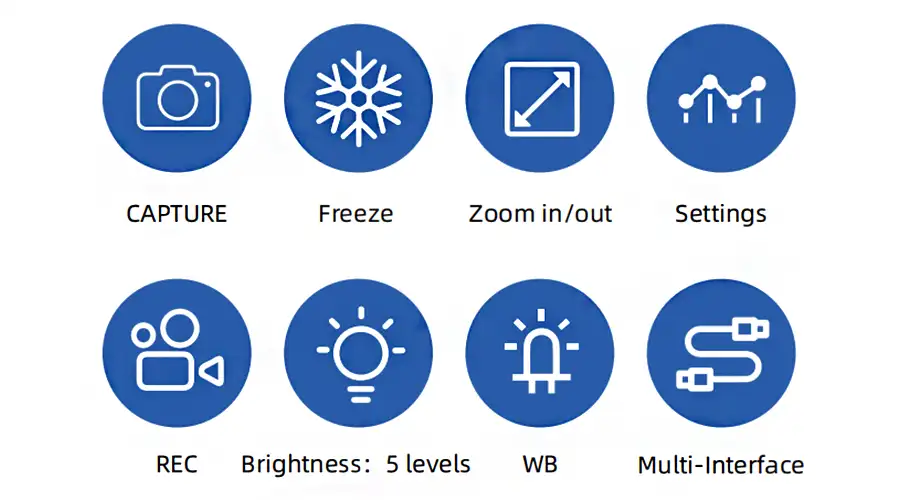
Strong compatibility
Compatible with Gastrointestinal Endoscopes, Urological Endoscopes, Bronchoscopes, Hysteroscopes,Arthroscopes, Cystoscopes, Laryngoscopes, Choledochoscopes, Strong Compatibility.
Capture
Freeze
Zoom In/Out
Image Settings
REC
Brightness: 5 levels
WB
Multi-Interface
1920 1200 Pixel Resolution Image Clarity
With Detailed Vascular Visualization
for Real-Time Diagnosis
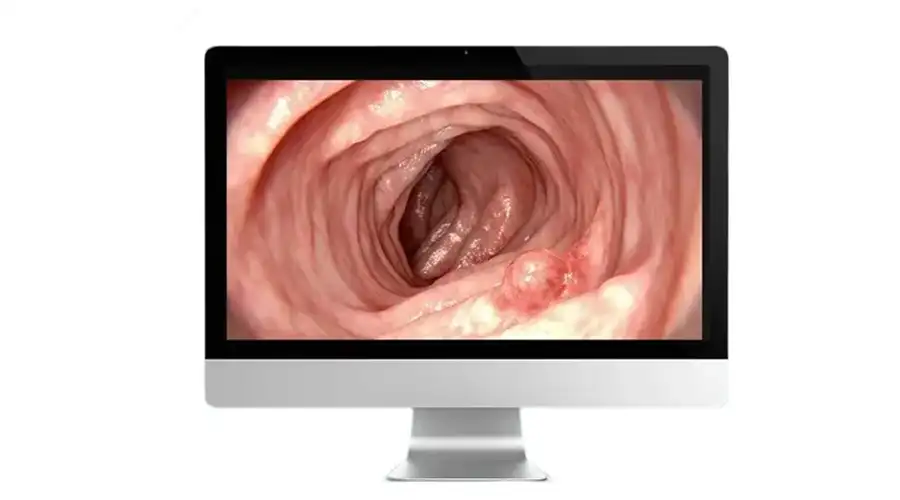
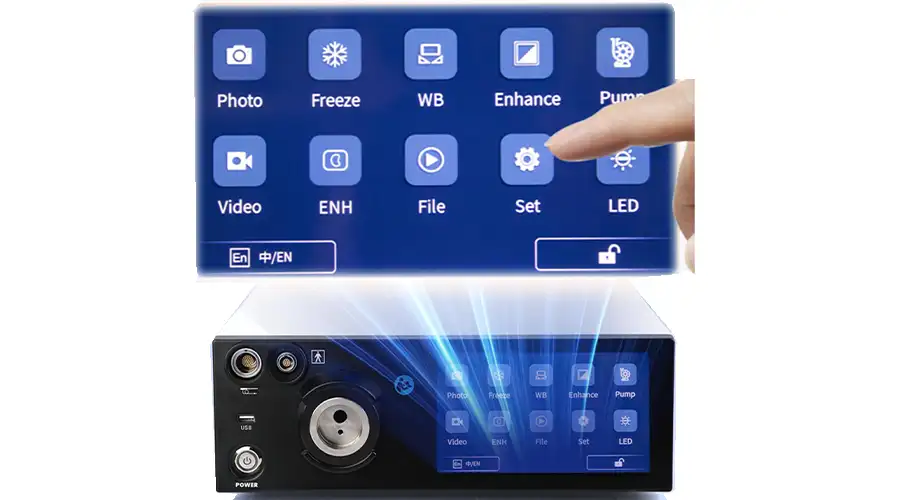
High Sensitivity High-Definition Touchscreen
Instant Touch Response
Eye-comfort HD display
Dual LED Lighting
5 adjustable brightness levels, Brightest at Level 5
gradually dimming to OFF
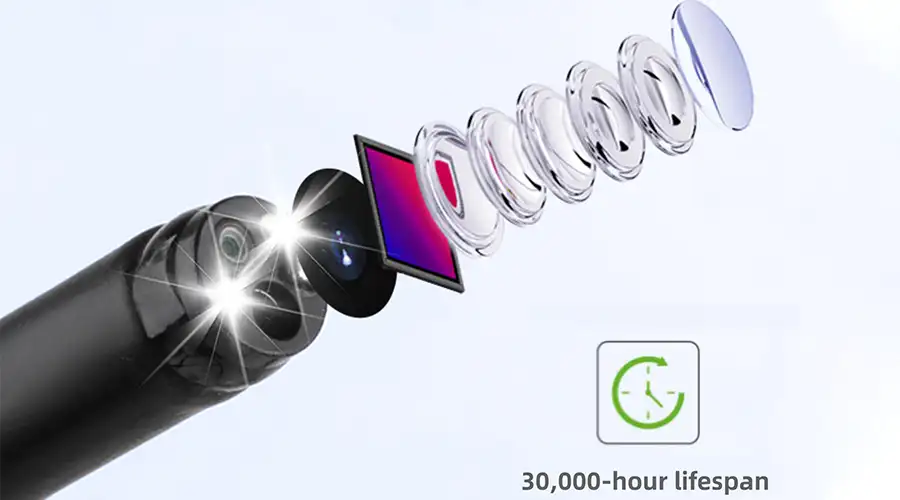

Brightest At Level 5
Brightness: 5 levels
OFF
Level 1
Level 2
Level 6
Level 4
Level 5
Vision Clarity For Confident Diagnosis
High-definition digital signals combined
with structural enhancement and color
enhancement technologies ensure
every image is crystal clear
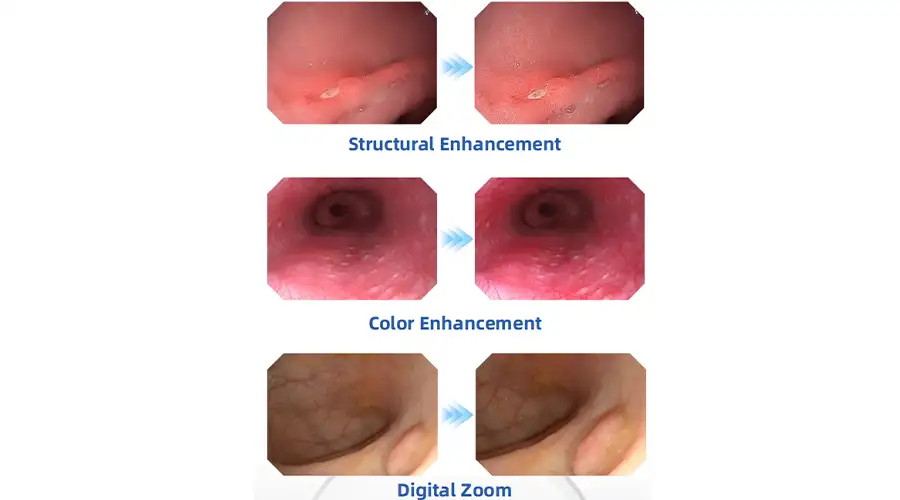
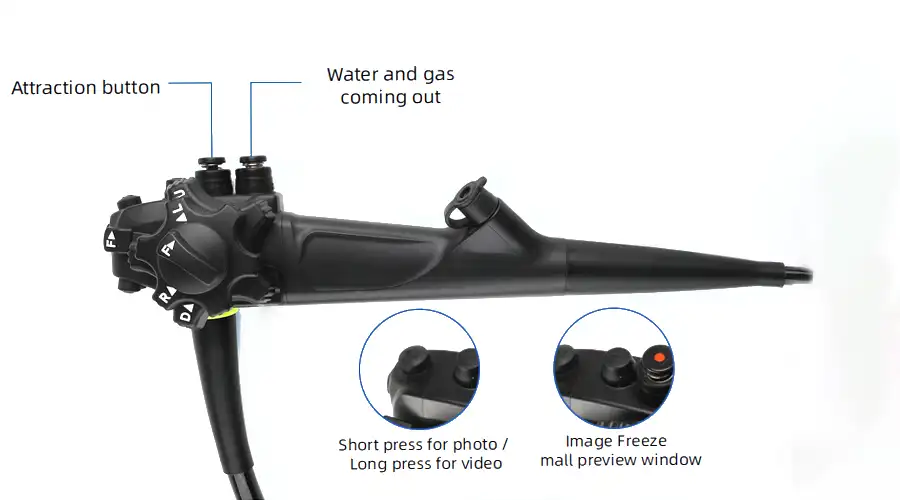
Lightweight Handpiece
Superior handling for effortless operation
Newly upgraded for exceptional stability
Intuitive button layout enables
precise and convenient control
The desktop host of gastrointestinal endoscope is the core control unit of the digestive endoscopy diagnosis and treatment system. It integrates image processing, light source management, data storage and surgical assistance, and provides full support for flexible endoscopy examinations and treatments such as gastroscopy and colonoscopy. The following is a comprehensive analysis from four dimensions: advantages, functions, effects and characteristics.
1. The core advantages of the desktop host of gastrointestinal endoscope
1. High-definition imaging and precise diagnosis
4K/8K ultra-high-definition display: The resolution reaches 3840×2160 (4K) or 7680×4320 (8K), which can clearly observe the fine structure of the mucosa (such as the morphology of gastric pits) and improve the detection rate of early gastric cancer and esophageal cancer.
Multispectral imaging technology (NBI/BLI/LCI):
NBI (narrow band imaging): 415nm/540nm dual-band enhanced vascular contrast, and the early cancer detection rate is increased by 30%.
BLI (blue laser imaging): Fuji patented technology, improves the ability to identify superficial lesions.
LCI (Linked Imaging): Optimize color contrast and improve diagnostic consistency of inflammatory bowel disease (IBD).
2. Intelligent AI-assisted diagnosis
Real-time AI lesion recognition (such as CADe/CADx system):
Automatically mark polyps and early cancer lesions (accuracy>95%).
AI-assisted classification (such as Paris classification, JNET classification) reduces missed diagnosis rate.
Intelligent report generation: Automatically generate structured reports in accordance with DICOM 3.0 standard to improve medical record management efficiency.
3. Modular design with strong scalability
Compatible with a variety of endoscopes (gastroscopes, colonoscopes, duodenoscopes) and treatment accessories (such as EMR/ESD instruments).
Support future upgrades (such as fluorescence imaging, OCT modules).
4. Efficient surgical support
Integrated high-frequency electrosurgical unit, argon gas knife (APC), and water injection system to reduce equipment switching time.
Intelligent gas/water injection: Controllable pressure (20~80mmHg) to reduce the risk of perforation.
5. Telemedicine and teaching applications
5G/Gigabit networks support 4K live broadcasting, and experts can conduct remote consultations or guide surgeries.
VR teaching systems (such as GI Mentor) are used for physician training to shorten the learning curve.
2. Core functions
Function categories Specific functions
Imaging functions 4K/8K ultra-high definition, NBI/BLI/LCI multi-mode, HDR wide dynamic range, optical/electronic magnification (80~150 times)
AI assistance Polyp identification, bleeding risk assessment, lesion classification (Paris classification/JNET classification), automatic report generation
Treatment support High-frequency electrosurgical resection (EndoCut), argon gas knife (APC), submucosal injection (such as glycerol fructose), hemostatic clip release
Data management DICOM 3.0 standard storage, PACS system docking, case database management, surgical video playback analysis
Remote collaboration 5G/fiber real-time transmission, cloud consultation, AI quality control (such as blind spot reminder)
Safety control Automatic brightness adjustment, pressure feedback water injection, electromagnetic compatibility (EMC) certification, low radiation design
3. Main functions
1. Improve the diagnosis rate of early cancer
NBI+ magnifying endoscope can identify early gastric cancer of type IIb <5mm, and the detection rate is increased to more than 90% (traditional white light endoscope is only 70%).
AI helps reduce human misdiagnosis (such as flat lesions).
2. Optimize endoscopic surgery process
ESD/EMR surgery: integrated electrosurgical unit and water injection system, shortening surgery time by 30%.
Hemostasis treatment: combined with Hemospray (hemostatic powder) + titanium clip, the immediate hemostasis success rate is >95%.
3. Promote telemedicine and standardized training
Grade-roots hospitals can obtain expert guidance from tertiary hospitals through 5G+AI quality control.
VR simulation training (such as virtual ESD surgery) improves the proficiency of novice doctors.
4. Scientific research and case management
Support multi-center research, case data cloud sharing (compliant with HIPAA/GDPR).
AI big data analysis (such as tumor growth pattern prediction).
4. Product Features Comparison (Mainstream Brands)
Brand/Model Resolution AI Function Featured Technology Price Range
Olympus EVIS X1 8K CADe/CADx (polyp classification) Dual-focus optics, near-infrared imaging $120,000+
Fuji ELUXEO 7000 4K LCI/BLI (color optimization) Laser light source, low-noise CMOS $90,000~150k
Pentax i7000 4K Real-time 3D reconstruction Ultra-thin lens (Φ9.2mm) $70,000~100k
Domestic Kaili HD-550 4K 5G remote consultation Domestic CMOS, high cost performance $40,000~60k
5. Future development trends
AI deep integration: from diagnostic assistance to surgical navigation (such as automatic ESD path planning).
Molecular imaging endoscopy: targeted fluorescent probes (such as anti-EGFR-IR800) to achieve accurate tumor marking.
Wireless/portable: modular design, the host volume is reduced by 50%, supporting mobile diagnosis and treatment.
Cloud collaboration: edge computing + blockchain technology to ensure the safe sharing of medical data.
Summary
The desktop host of gastrointestinal endoscopy has become the core equipment for digestive endoscopy diagnosis and treatment with its advantages of high-definition imaging, AI intelligence, modular design, and telemedicine. Comprehensive considerations should be made when choosing:
Clinical needs (early cancer screening/complex surgery)
Scalability (whether it supports AI upgrades, fluorescent modules)
Cost-effectiveness (domestic vs. imported)
It is expected that in the next five years, with the popularization of AI and 5G technologies, the host of gastrointestinal endoscopy will further develop towards intelligence, precision, and cloud computing, and promote the diagnosis and treatment of digestive diseases into a new stage.
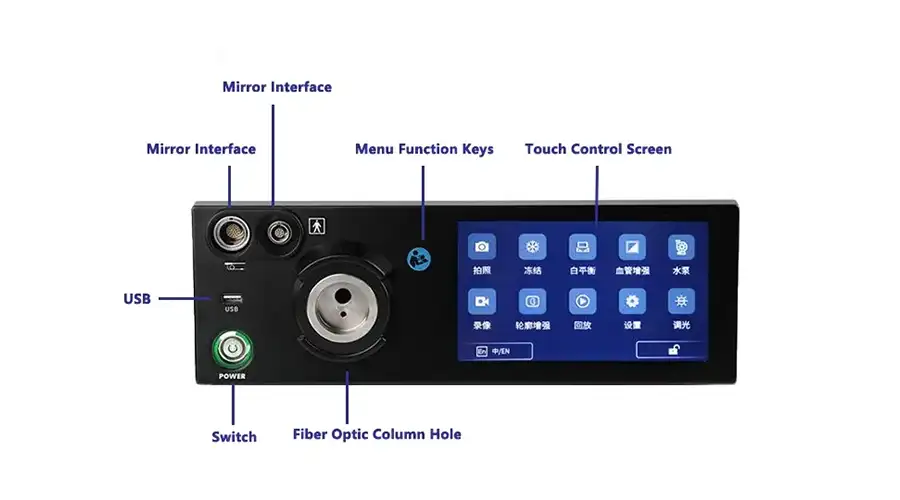
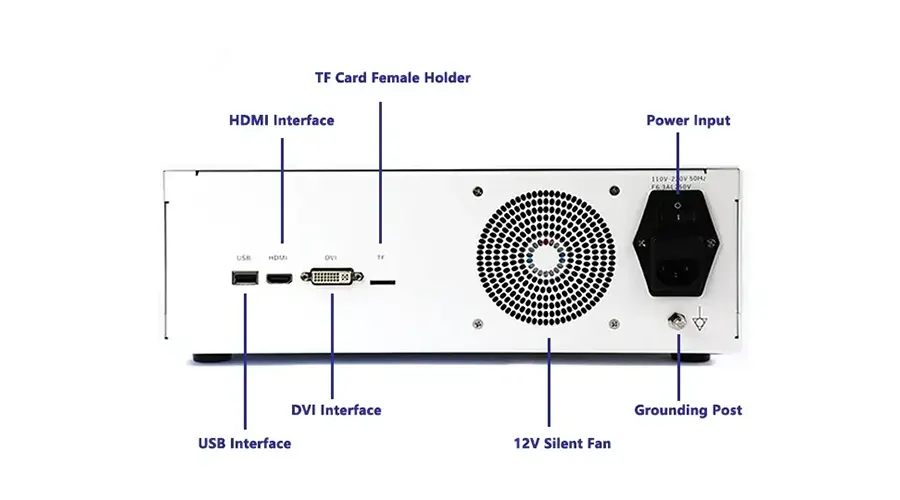
Faq
-
What auxiliary equipment does the gastrointestinal endoscopy host need to be paired with?
The gastrointestinal endoscope host needs to be used in conjunction with a cold light source, video processor, display, and various endoscopes. Some high-end models also require auxiliary devices such as air pumps and water pumps to complete water and gas injection operations.
-
How to deal with image blur of gastrointestinal endoscopy host?
Firstly, clean the lens and check if the lens body is damaged. Secondly, adjust the focal length of the main unit and the brightness of the light source. If it is still blurry, it may be a CCD malfunction and requires professional maintenance or replacement of components.
-
How to upgrade the gastrointestinal endoscopy host system?
System updates can be carried out through the upgrade package or remote service provided by the manufacturer. Before upgrading, data backup is required and the power supply must be ensured to be stable to avoid equipment failures caused by interruptions.
-
Is it normal for the gastrointestinal endoscope host to have a fever during use?
Mild fever is a normal phenomenon, but if overheating is accompanied by noise or automatic shutdown, it may be a problem with the cooling system. It should be stopped immediately and after-sales maintenance should be contacted.
Latest articles
-
How XBX Cystoscope Supplier Ensures Quality and Precision for Hospital Procurement
Discover how the XBX Cystoscope Supplier provides hospitals with high-precision, OEM-ready endoscopy systems built for reliability, safety, and consistent imagi...
-
How XBX Bronchoscope Factory Delivers Reliable OEM Systems
Discover how the XBX Bronchoscope Factory ensures quality and reliability through advanced OEM manufacturing, optical precision, and strict quality control.
-
How XBX Laparoscope Minimizes Surgical Trauma in Abdominal Surgery
Discover how the XBX Laparoscope reduces surgical trauma through precision imaging, minimal incisions, and faster recovery in modern abdominal procedures.
-
How XBX Hysteroscope Detects and Removes Uterine Polyps
Discover how the XBX Hysteroscope enables precise detection and removal of uterine polyps, improving accuracy, safety, and comfort in women’s health care.
-
What Is an XBX Flexible Ureteroscope for Stone Removal?
Learn how the XBX flexible ureteroscope improves access, visibility, and efficiency in ureteral stone management with 4K imaging and ergonomic control.
Recommended products
-
Gastrointestinal Endoscope Host
Gastrointestinal Endoscope Host provides 4K medical imaging for medical endoscopes, enhancing diagno
-
Desktop medical endoscope host
Desktop medical endoscope host delivers HD imaging for endoscopy medical endoscopes, enhancing diagn
-
multifunctional medical endoscope desktop host
Multifunctional medical endoscope desktop host delivers HD imaging for endoscopy medical endoscopes,

